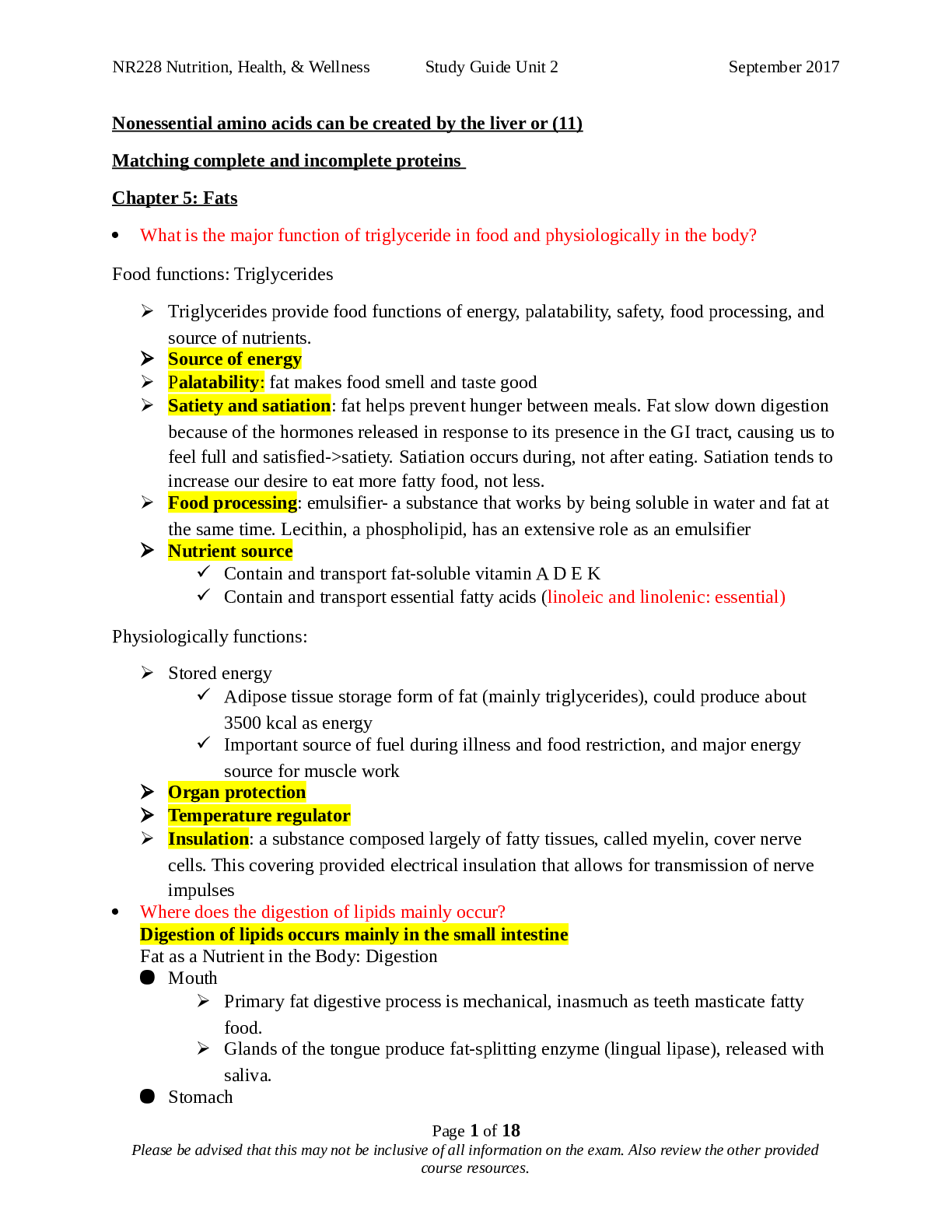Health Care > STUDY GUIDE > NR599_ Nursing Informatics Final Exam Study Guide (All)
NR599_ Nursing Informatics Final Exam Study Guide
Document Content and Description Below
Ethical decision making ■ ANA (2015) provides specific guidance for ethical decision making via its Code of Ethics for Nurses with Interpretive Statements ● Respect for human dignity ● Respe... ct for the individual right to self-determinism ● Primary commitment to the patient (defined as individual, family, group, or community) ● Advocacy for the patient ● Participation in the creation, maintenance, and improvement of healthcare environments ● Advancing the profession ● Collaboration with others to meet health needs ● Shaping social policy ○ Ethical Issues with HIT and Nursing Informatics ■ As with everything, a new way of viewing the world = enduring values of the previous worldview ■ As healthcare transforms digitally (communications, telehealth, and wearable technologies) it brings some familiar tools and skills recognized in the form of values, such as privacy, confidentiality, autonomy, and nonmaleficence. ● Although those basic values should remain unchanged, the standards for living out these values will take on new meaning as health professionals confront new and different moral dilemmas brought on by the adoption of technological tools for: ○ information management ○ knowledge development ○ and evidence-based changes in patient care ■ The ethical-decision frameworks should not change but only become more complex. ■ Examples of issues having an ethical component include the following: ● Failure to adapt technology or use it adaptly ● Lack of regard to data integrity such as discrepancies in record information that are noted but no corrective action is taken ● Failure to address threats to privacy and personal health information ● Inappropriate access to PHI without a need to know ● Failure to recall that the patient is their primary focus ● Failure to engage in policy discussions that impact healthcare delivery ● Failure to recognize and use technology to advance the profession ● Failure to keep informed of emerging developments and issues ■ Protecting health information, the privacy and security of patient information is a top priority for patients and their families, health care providers and professionals, and the government. ■ HIPAA: “key persons and organizations that handle health information to have policies and security safeguards in place to protect your PHI whether it is stored on paper or electronically.” ■ Ethical issues can result in patient harm: ● Reputation ● Physical safety ● Discrepancies in recording information and not correcting is irresponsible ● Example: APNs continue to use written documentation when digital is the new expectation ○ Creation of a fragmented record ■ Increasing the likelihood that important information will be lost → in unstructured data and is invisible for data analysis ■ APNs have an integral role not only in the proper collection of Meaningful Use criteria but also in defining further criteria, which will collect information that will better determine and support population-health needs and services. ● Perhaps the biggest ethical challenge comes when nurses fail to embrace their roles in shaping health policy and social change. ● Nurses need to be aware of the facts related to features of HIT legislation, particularly the Patient Protection and Affordable Care Act (ACA). ● ACA was intended to improve care and reduce disparities and help reform healthcare. Lachman (2012) noted distributive justice as the major ethical principle underlying health-reform initiatives. ■ Emerging technology will introduce new issues and dilemmas. ■ In addition to the use of EHRs, there is a growing use of social media to market provider services and provide support. ● Many organizations struggle with questions surrounding the proper use of social media. ● Genomics, or personalized medicine targeted to one's specific genetic make-up, is an area within our grasp but still not widely known. ● And, technological advancements and miniaturization are quickly making nanotechnology an area that we will need to address. ● Nanotechnology is science, engineering, and technology that is conducted at the level of the nanoscale (nano.gov, n.d.). For reference purposes, a nanometer is equal to one billionth of a meter. ● Bioethical standards ○ The study of healthcare ethics ○ Study and formulation of healthcare ethics. ○ Bioethics takes on relevant ethical problems experienced by healthcare providers in the provision of care to individuals and groups. ● Telehealth and Point-of-Care (POC) Technologies ○ Many mHealth technologies are being used to broaden access to care, either by extending the reach of providers through remote monitoring of patients or by giving advice when users otherwise would not visit a medical professional. ○ Apps like Pocket Doctor and iTriage, which suggest possible diagnoses on the basis of inputs from patients, are proliferating. ○ Making medical advice available beyond traditional settings could broaden access to care for the uninsured, those living in rural areas, immigrants, and perhaps even elderly patients. Tremendous strides have been made in deploying mHealth technologies to expand access to care in less developed countries. ○ Telehealth is still an evolving technology; while the offsite interventions or contacts often lead to less time being wasted on non-care-oriented tasks because of the efficiencies offered by the technology applications, its use must never be associated with less care. It is also important to note that nursing activity in telehealth still follows the same best-practice standards as those espoused in conventional care. ○ Clinical Uses for Telehealth ■ Transmitting images for assessment or diagnosis ● Wounds for assessments and treatment consults ■ Transmitting clinical data for assessment, diagnosis, or disease management ● Remote patient monitoring and transmitting patients’ objective or subjective clinical data, such as monitoring of vital signs and answers to disease management questions. ■ Providing disease prevention and promotion of good health ● Case management is provided via telephone or smartphone app and patient education is provided through asthma and weight management programs conducted in schools. ■ Using telephonic or video interactive technologies to provide health advice in emergent cases ● Performing teletriage in call centers or real-time stroke consultation between a rural health center and an academic medical center. ■ Using real-time video ● Exchange health services or education ○ POC testing ■ Point-of-care (POC) testing allows for testing and diagnosis at the patient's side and can be conducted anywhere the patient is, such as the home, physician’s office, ambulance, or hospital bedside (National Institutes of Health, 2010). ■ This technology allows for quick, on-the-spot testing, with immediately available results. ● Additionally, these results can be downloaded directly into the EHR through interface engines. ● This decreases the risk of error in manually entered results, and the results are immediately available to caregivers for making treatment decisions. ■ There are many innovative devices emerging, particularly those that engage the patient in his or her own care to monitor and maintain health and well-being, including such things as fitness measuring devices, scales, biometric devices, as well as FDA-approved medical devices, such as insulin pumps, pacemakers, defibrillators, and so forth, which can be interfaced with EHRs and patient portals. ■ The potential for advancement in POC devices is one of the most rapidly growing areas in the health care industry with tremendous potential for improvement in patient safety, quality, and population health. ● Medical (Mobile) Applications ○ Mobile health is also known as mHealth, is defined as the use of wireless communication to support efficiency in public health and clinical practice (Yetisen et al., 2014). ○ Facilitation of mHealth = mobile apps which can be executed either on a mobile platform or a web-based software application that is tailored to a mobile platform but is executed on a server. ■ Mobile medical apps = accessory → smartphones, tablets, smartwatches, and POC devices ○ Major areas for mHealth growth are: ■ Preventive medicine and health promotion can be leveraged through education and awareness applications; ■ Portable diagnostic devices that allow monitoring of human conditions in clinical settings or offsite locations; ■ Applications for data management, training medical personnel, and mobile payments. [Show More]
Last updated: 1 year ago
Preview 1 out of 14 pages

Reviews( 0 )
Document information
Connected school, study & course
About the document
Uploaded On
Dec 13, 2022
Number of pages
14
Written in
Additional information
This document has been written for:
Uploaded
Dec 13, 2022
Downloads
0
Views
40



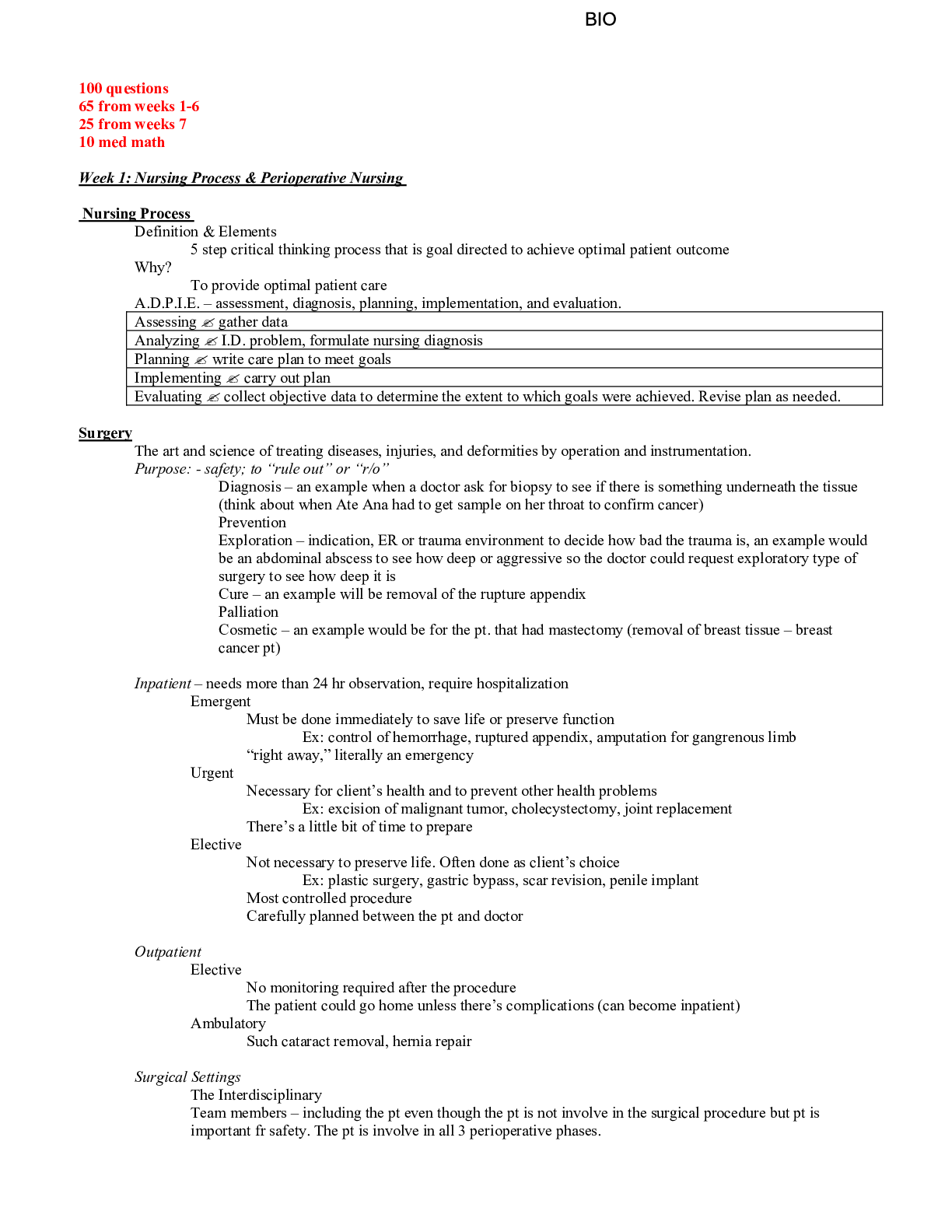
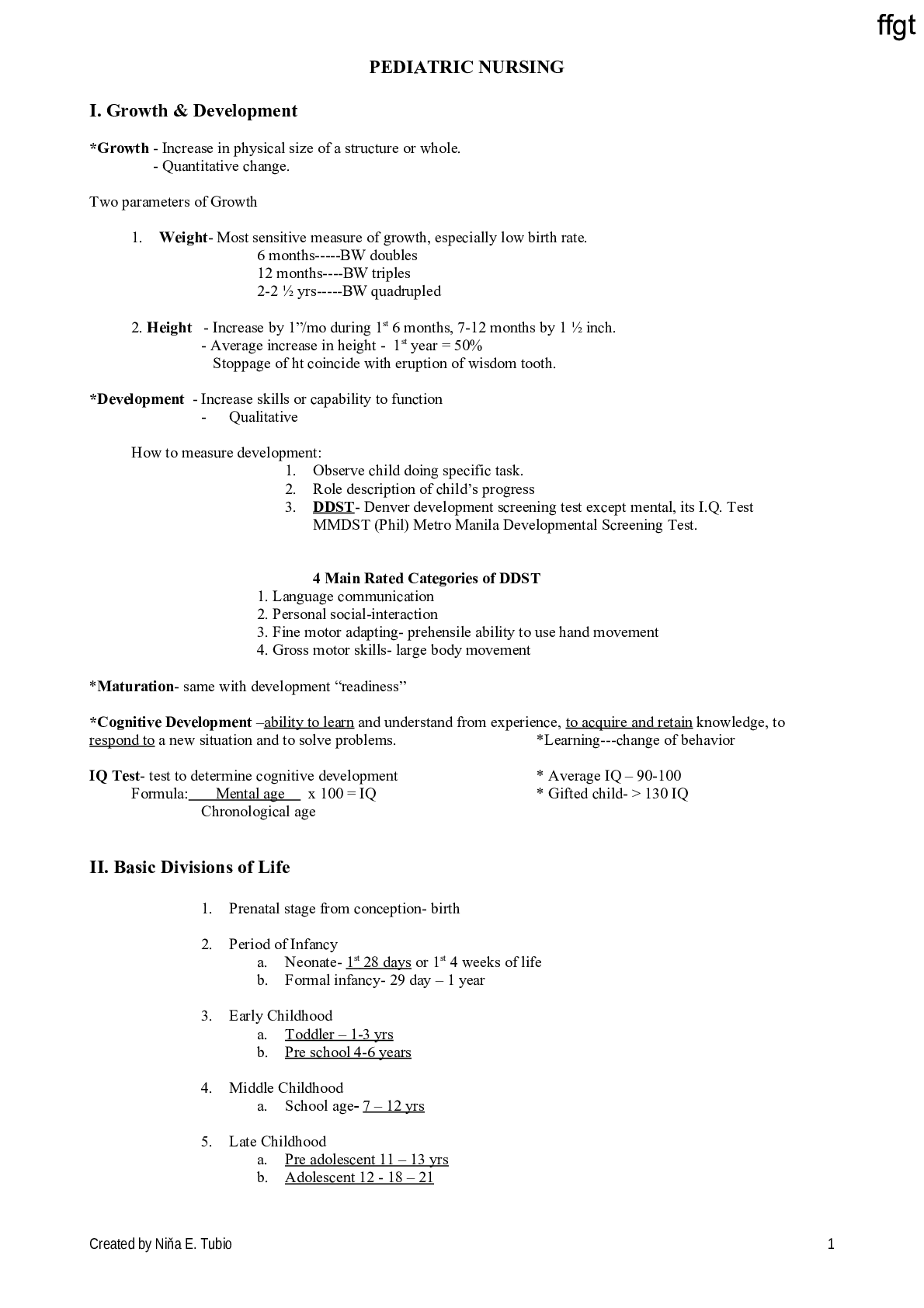
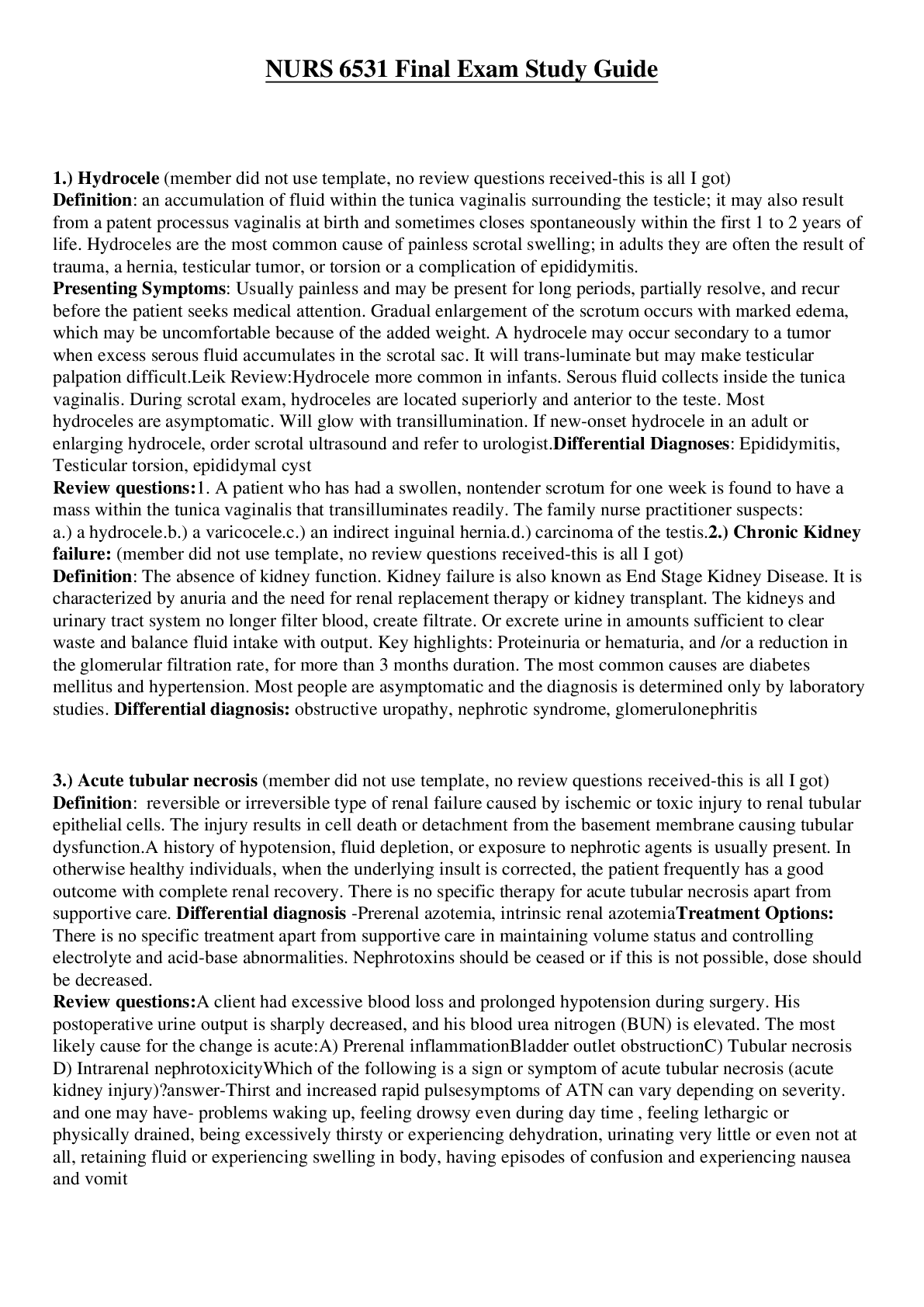
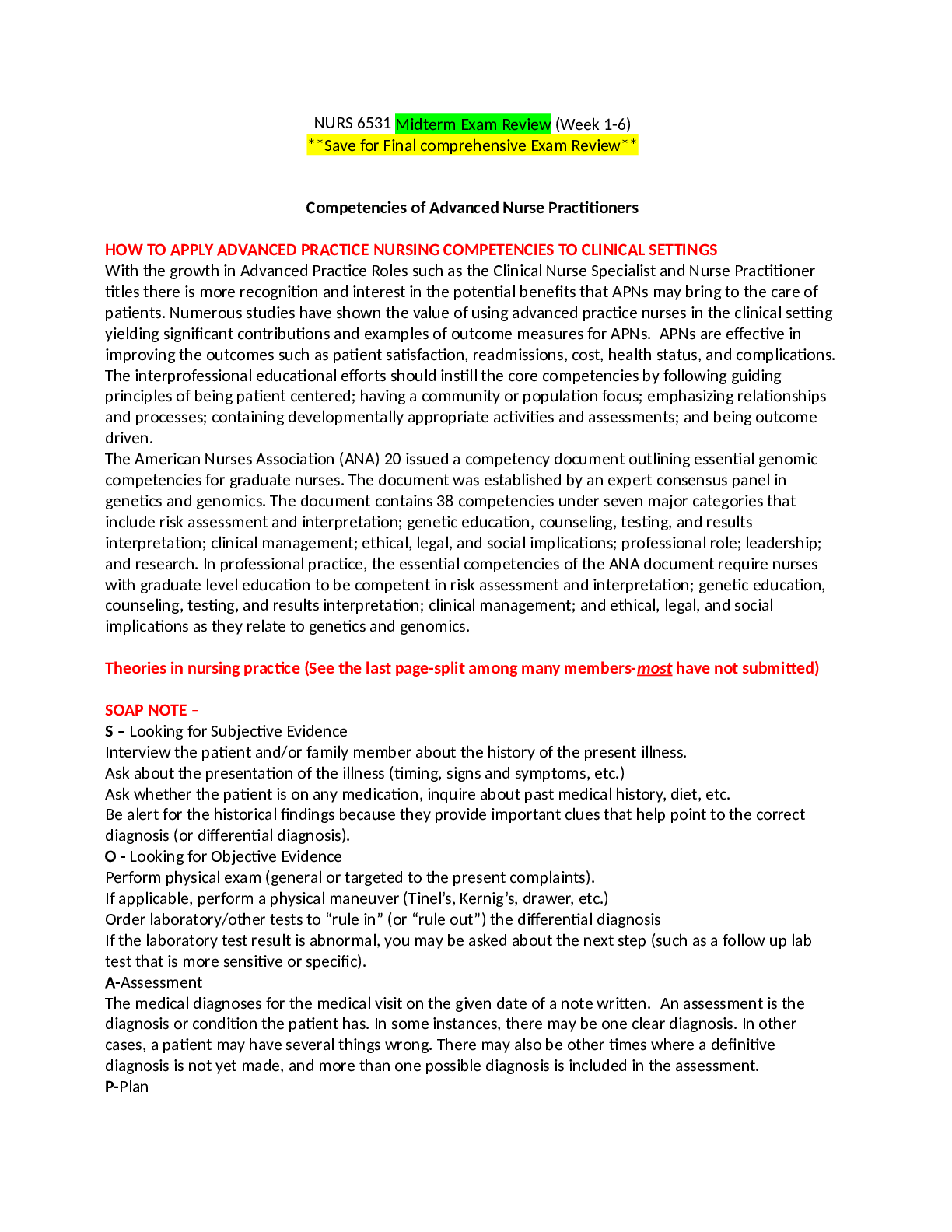




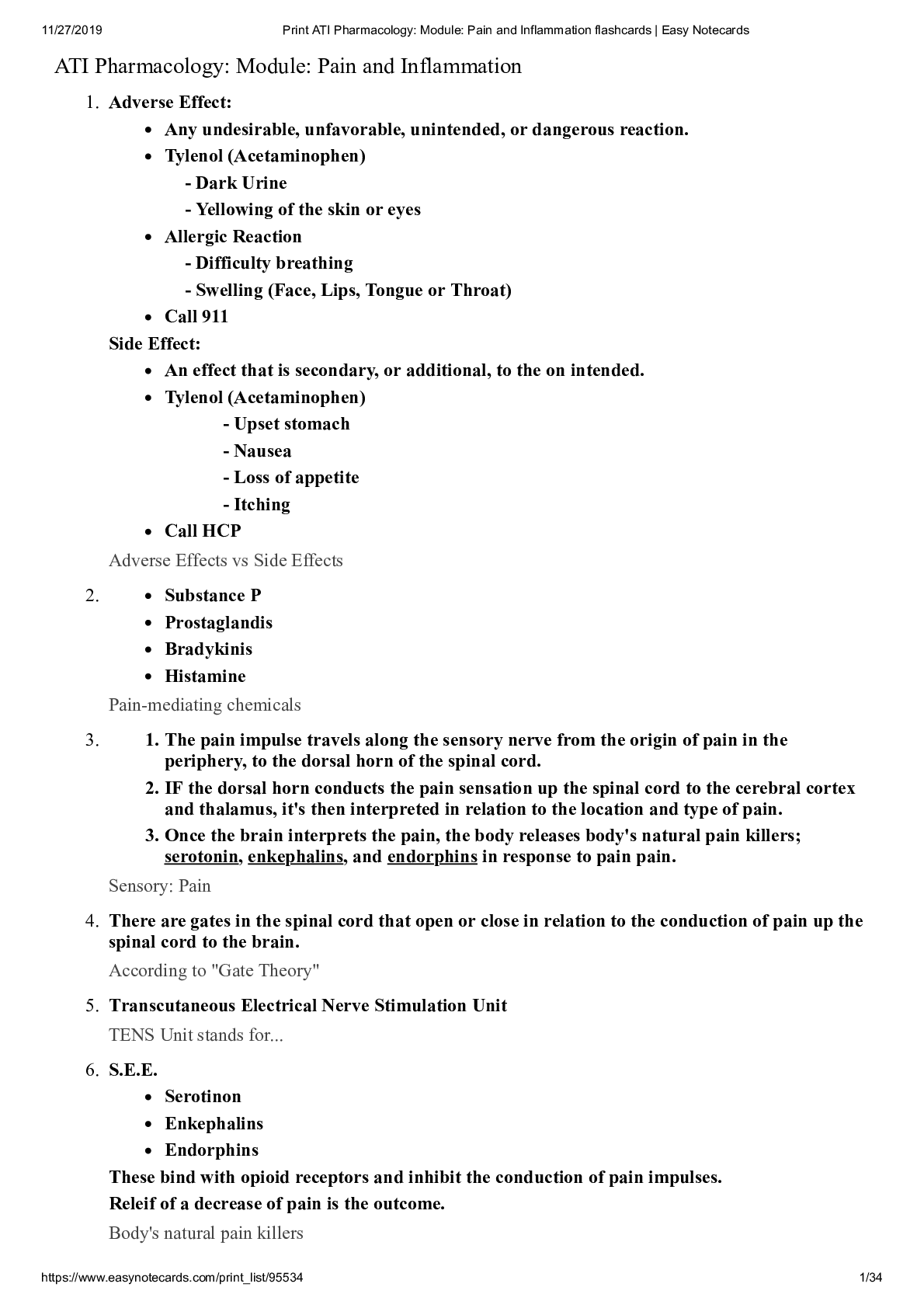

.png)
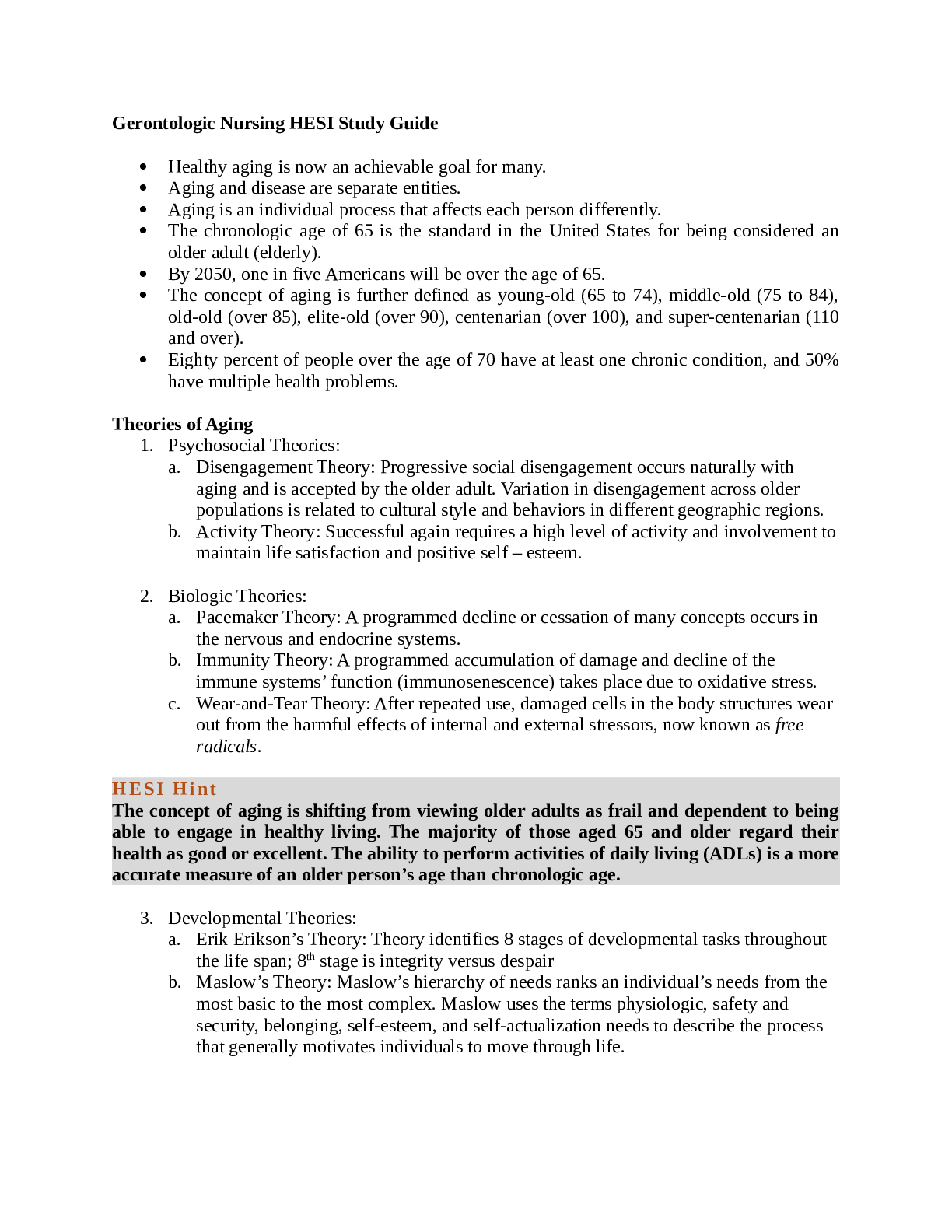
.png)
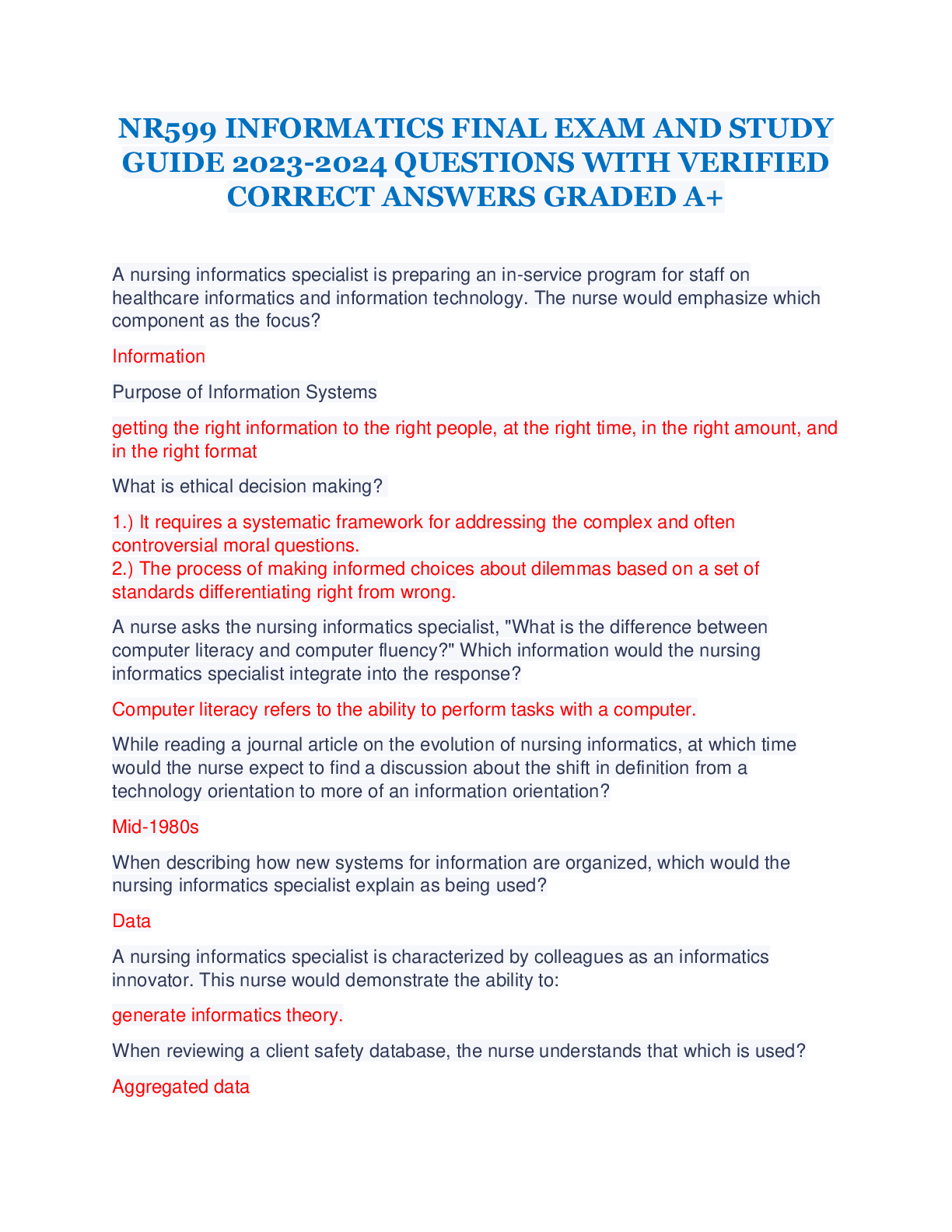

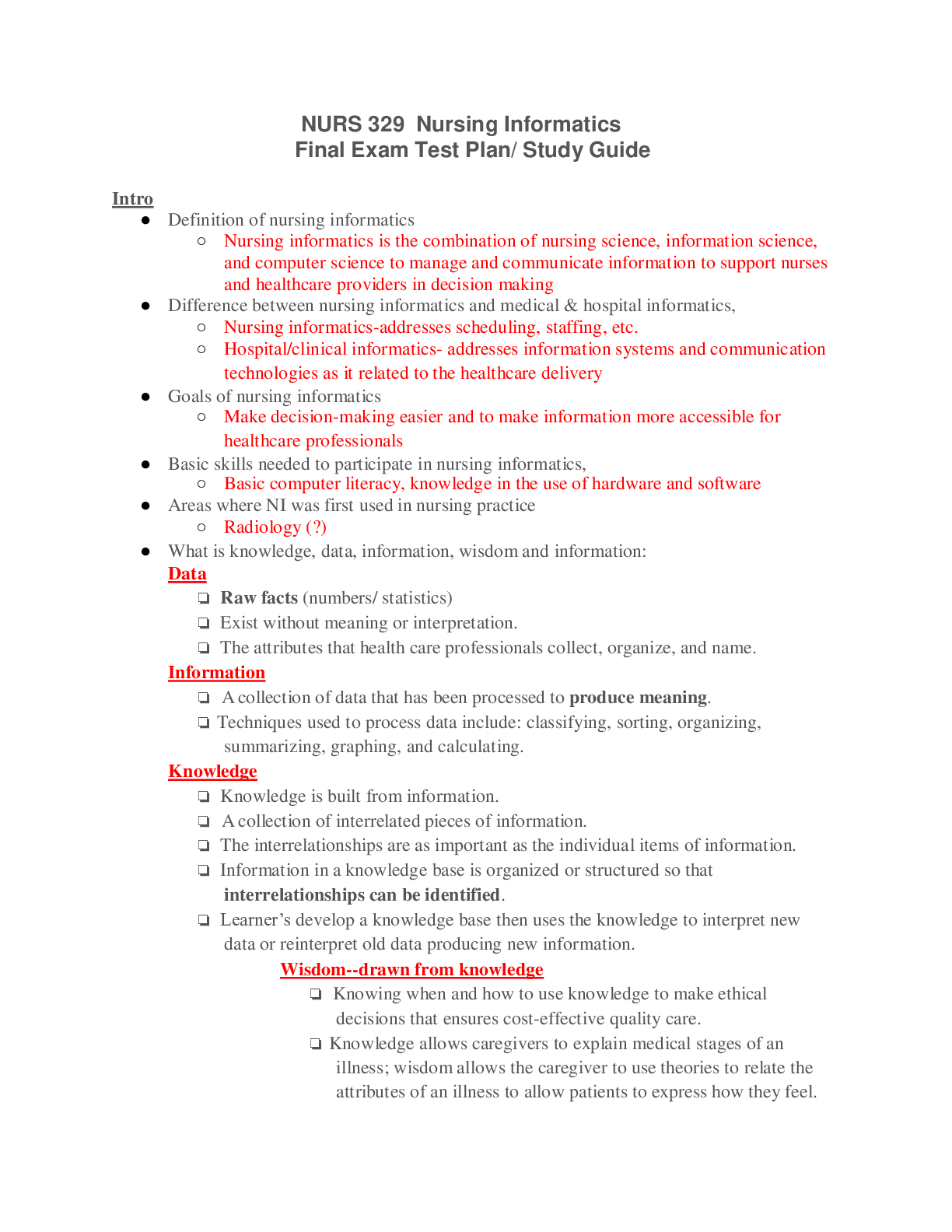








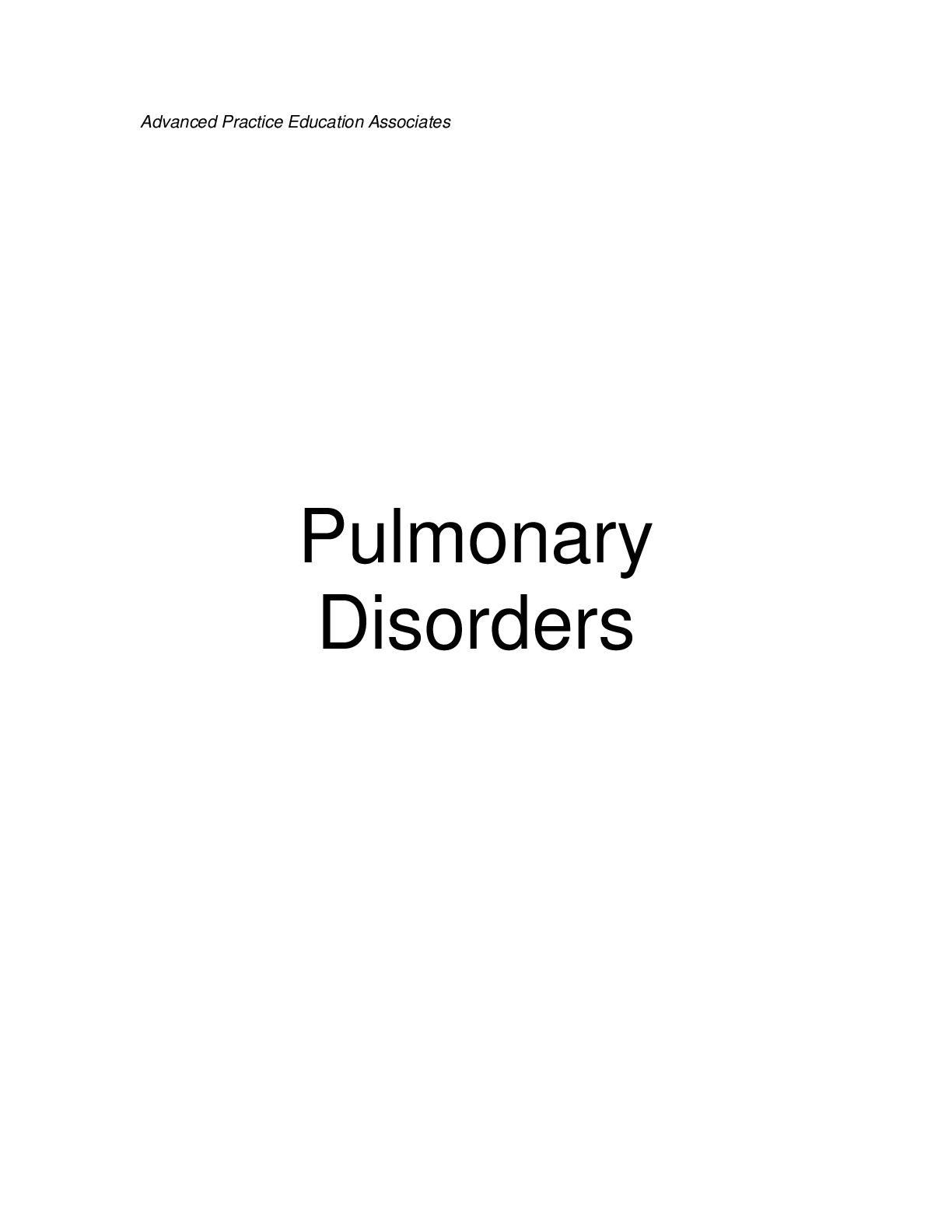
.png)





